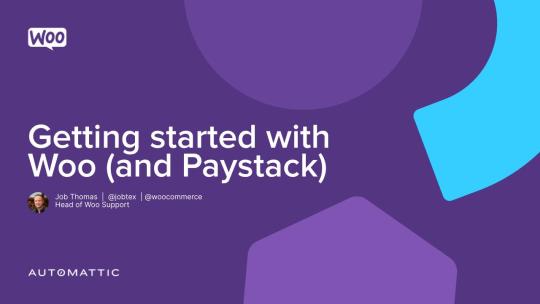#woocommerce subscriptions
Explore tagged Tumblr posts
Text
Essential WooCommerce Subscription Plugins for 2024

The correct subscription plugin can significantly enhance customer experience, automate renewals, and speed up the administration of recurring payments for proprietors of WooCommerce businesses.
Selecting a suitable plugin can improve your company's revenue model whether you're establishing a fresh subscription service or enhancing an already-existing one. We'll analyse the top subscription plugins in this post, looking at their key characteristics, costs, and unique benefits. The purpose of this guidance is to enable you to make an educated decision that fits your unique business needs. Now let's get started!
1. Woo Subscriptions
Woo Subscriptions is perfect for creating reliable streams of income through model subscriptions because it enables businesses to set up automatic payments. Many membership methods for both apparent and virtual goods are made possible by this plugin.
Woo Subscriptions additionally allows companies to send renew alerts to consumers, ensuring that they are informed of their membership status, and links easily with over 25 payment processors.
2. Subscriptions for WooCommerce
You can build and manage subscription plans for your products and services with ease using the Subscriptions for WooCommerce plugin. It even works well for numerous various kinds of businesses. From online classes and online stores to OTT platforms and fitness centres. For your subscription-based things, you can also set up recurring payments for a specific amount of time. In addition, a free trial of this plugin's membership is available. As a result, your customers are aware of what their membership covers. It ensures smooth transaction processes through integrating with payment gateways like PayPal Standard with ease.
3. Prepaid for WooCommerce Subscriptions
The Prepaid for WooCommerce Subscriptions plugin enhances WooCommerce Subscriptions by allowing merchants to offer prepaid plans. This extension is perfect for businesses seeking to provide customers with the option to pay upfront for a subscription period, offering potential cost savings for both parties.
With this plugin, merchants can create multiple prepaid plans for each subscription product. For instance, alongside a standard monthly subscription, they can offer options like a 6-month or annual prepaid plan. This flexibility encourages higher customer commitment and upfront revenue generation.
5. SUMO Subscriptions
Users can create order subscriptions for non-subscription products as well as basic, variable, and group product subscriptions with the SUMO Subscription plugin. It offers customisation with regard to of subscription lengths and choices for renewal.
The flexible payment gateway support provided by this plugin is one of its best features. For manual subscription renewals, it interfaces with any payment gateway that is compliant with WooCommerce. SUMO Subscriptions has incorporated support for renowned gateways like Stripe and PayPal for automatic renewals, ensuring seamless transaction processing.
Wrapping Up!
A few of the best WooCommerce store-specific Custom Order Status plugins were looked at. The features of these plugins differ; certain ones provide bulk editing options and a limitless ability for developing customised status updates. Email notifications and reporting tools are typical features. It's essential that you select the plugin that maximises order management and best suits the particular needs of your WooCommerce website.
0 notes
Link
#recurring payment#recurring payments#subscription#subscription payment#subscription payments#subscription woocommerce#subscriptions#subscriptions woocommerce#woocommerce subscription#woocommerce subscriptions
0 notes
Text
Install and use the Playback Rewards App!
#installation#playlist#playback#apple music#autos#celebrities#appleradio#software#mobile app#developer#application#rewards#subscription#market#woocommerce#animals#america#iphone#iphonography
0 notes
Text
Getting started with Woo and Paystack
Today, I presented at the Paystack bootcamp in Cape Town and gave an introduction to Woo. Since today is also the day of the rugby world cup finals, and both South Africa and New Zealand sell their fan gear with Woo, I went a bit overboard with rugby references. The scoring Both the Springboks and the All Blacks use Woo, so they each score a point there. Woo used to have a head office in South…

View On WordPress
#All Blacks#AutomateWoo#Automattic#Conference#New Zealand#Paystack#Presentation#South Africa#Speaking#Springboks#Woo#Woo Subscriptions#WooAutomate#WooCommerce#Work
1 note
·
View note
Text
Insights on WooCommerce Subscriptions, and Memberships
In today’s competitive eCommerce landscape, offering subscriptions and memberships is a powerful way to create a loyal customer base and generate a steady stream of recurring revenue. WooCommerce, the most popular eCommerce platform for WordPress, offers two powerful plugins to help you build a successful subscription or membership-based business: WooCommerce Subscriptions and WooCommerce…

View On WordPress
0 notes
Text
Was going to write this as a reply to something but realized it needed its own post.
The tl;dr is that, from the looks of it, Automattic absolutely has every intention of turning Tumblr into a marketing media platform.
I work for a marketing company. I build websites.
Specifically, I build websites on Wordpress.org, which is operated by the Wordpress Foundation.
The Wordpress Foundation is the non-profit counterpart to the for-profit company Automattic.
Automattic, as we know, is the company that currently owns Tumblr.
Now, the thing about Wordpress.org (not to be confused with Wordpress.com) is that it's very, VERY popular amongst small businesses. Not only can you build a fully-customizable website with relative ease, you can also add an online shop using another Automattic product: Woocommerce.
Not too long ago, I noticed a new feature was added to Woocommerce: A button next to each Woocommerce product which allows you to Blaze them to Tumblr right from the comfort of your dashboard:

This is what I get when I click that little "Blaze" button...

As someone who understands these tools, I understand the potential implications of these features:
The Blaze feature is basically an up-and-coming ad campaign system that's directly integrated with Woocommerce websites, which I think is the first ad marketing system of its kind. You don't have to log into a social media account to advertise your products, use a second-party integration, or even pay another service to manage your social media ads. It's all baked right into your business's website.
THIS is their planned money-maker, folks, not the rainbow checkmarks or crab armies. And the reason why Automattic would do this kind of thing is simple: Businesses are wealthier than individuals. By implementing a B2B service, Automattic can make more money off of Tumblr than user subscriptions and shoelaces will ever provide.
It's all the same song and dance. Businesses can now shove more ads into your face in a new, convenient fashion. It'll be ads that don't look like ads disguised amongst ads that do look like ads, just like it is with Facebook, TikTok, Instagram, and literally every other marketing media service that calls itself a "social" media.
(Tumblr's new video feature? My guess is that it's there to prepare for video-format Blaze campaigns. Influencer-style videos are the only kind of ad format Gen-Z is receptive to, which is why you're suddenly seeing videos on every platform.)
All they really gotta do now is make Tumblr look appealing to the normies so they can draw in a userbase that isn't trying to escape the onslaught of commercialism that plagues other sites.
Tumblr is one of the last true social medias we have; a place where content is made purely for the sake of talking about it. But given the writing on the wall...I doubt it'll stay that way.
2K notes
·
View notes
Text

Starting an e-commerce business can be an exciting venture with immense potential. However, with the opportunities come challenges and uncertainties. Before diving into the world of online retail, it’s crucial to plan carefully and set a solid foundation. Here are some essential tips to consider before launching your e-commerce business:
1. Conduct Market Research
Understanding the market is fundamental to any successful business. Start by identifying your target audience and analyzing competitors. Research trends, customer preferences, and potential gaps in the market. Tools like Google Trends, social media analytics, and industry reports can provide valuable insights. This research will help you tailor your products or services to meet market demands and differentiate yourself from competitors.
2. Define Your Business Model
E-commerce offers various business models, such as B2C (Business to Consumer), B2B (Business to Business), C2C (Consumer to Consumer), and subscription-based models. Determine which model aligns with your goals and resources. Each model has its own set of challenges and requirements, so choose one that best fits your product or service and target market.
3. Create a Solid Business Plan
A comprehensive business plan serves as a roadmap for your e-commerce venture. Outline your business goals, strategies, target audience, marketing plan, financial projections, and operational plan. This document will not only guide your efforts but also help secure funding if needed. A clear plan can keep you focused and organized as you navigate the complexities of launching and running an e-commerce business.
4. Choose the Right E-Commerce Platform
Selecting the right e-commerce platform is crucial for the success of your online store. Popular platforms like Shopify, WooCommerce, Magento, and BigCommerce each offer unique features and capabilities. Consider factors such as ease of use, scalability, customization options, payment gateways, and integration with other tools. The platform should align with your business needs and provide a user-friendly experience for both you and your customers.
5. Develop a User-Friendly Website
Your website is the face of your e-commerce business. Ensure it’s designed to be user-friendly, visually appealing, and optimized for mobile devices. A clean, intuitive layout with easy navigation will enhance the shopping experience and reduce cart abandonment rates. Focus on high-quality images, detailed product descriptions, and a seamless checkout process. Additionally, implement search engine optimization (SEO) strategies to improve your site’s visibility in search engines.
6. Implement Secure Payment Processing
Security is a top priority in e-commerce. Customers need to trust that their payment information is safe. Choose a reputable payment gateway and ensure your website uses SSL certificates to encrypt data. Additionally, offer multiple payment options, including credit/debit cards, digital wallets, and other payment methods that are popular with your target audience.
7. Plan Your Logistics and Supply Chain
Efficient logistics and supply chain management are vital for e-commerce success. Develop a strategy for inventory management, warehousing, and shipping. Decide whether you’ll handle fulfillment in-house or partner with third-party logistics providers. Consider shipping options, delivery times, and costs. A smooth and reliable fulfillment process can significantly impact customer satisfaction and repeat business.
8. Craft a Marketing Strategy
Effective marketing is essential to drive traffic and sales to your e-commerce store. Develop a multi-channel marketing strategy that includes social media, email marketing, content marketing, and paid advertising. Create engaging content, run promotions, and leverage social media platforms to build brand awareness and attract customers. Monitor and analyze the performance of your marketing efforts to refine your strategies over time.
9. Focus on Customer Service
Exceptional customer service can set your e-commerce business apart from competitors. Provide multiple channels for customer support, such as live chat, email, and phone. Ensure timely responses to inquiries and resolve issues promptly. Building strong customer relationships and encouraging feedback can enhance customer loyalty and drive positive reviews.
10. Monitor and Adapt
The e-commerce landscape is constantly evolving. Regularly review your business performance, track key metrics, and gather customer feedback. Stay informed about industry trends and technological advancements. Be prepared to adapt your strategies and operations based on insights and changes in the market.
#ecommerce#marketing#business#digitalmarketing#ecommercebusiness#entrepreneur#onlineshopping#website#seo#webdesign#b#marketingdigital#onlinebusiness#branding#shopify#smallbusiness#socialmediamarketing#webdevelopment#online#amazon#shopping#onlinestore#onlineshop#design#ecommercewebsite#dropshipping
5 notes
·
View notes
Text
RedotPay: The Ultimate Payment Gateway for Fiat and Crypto Transactions.

Introduction
In today’s fast-paced digital economy, having a reliable payment gateway is crucial for businesses. RedotPay offers a versatile solution for managing both fiat and cryptocurrency transactions, making it an ideal choice for modern businesses. With features like zero tax transactions, free virtual cards, and global ATM access, RedotPay simplifies online payments while enhancing security and convenience. Plus, enjoy a $5 sign-up bonus and easy transferability. Discover why RedotPay is the preferred choice for businesses and how you can benefit from their referral program.
What is RedotPay?

RedotPay is an advanced payment gateway designed to handle both traditional fiat currencies and a range of cryptocurrencies. It provides a user-friendly platform that supports seamless online payments, ensuring high security and adaptability for businesses of all sizes. Key features include zero tax transactions, free virtual cards, and global ATM support.
Key Features of RedotPay
1. Support for Fiat and Cryptocurrency:
RedotPay supports transactions in both traditional currencies and digital cryptocurrencies. This feature allows businesses to cater to a diverse customer base and stay ahead in the evolving financial landscape.
2. Easy 0% Tax Transactions:
Enjoy effortless transactions with RedotPay’s zero tax processing. This feature eliminates additional transaction costs, simplifying financial management and maximizing your profits.
3. Free Virtual Card:
Upon signing up, you receive a free virtual card from RedotPay. This card can be used for secure online purchases, subscriptions, and other transactions, offering an extra layer of security.
4. Support for All Major E-Commerce Platforms:
RedotPay integrates seamlessly with all major e-commerce platforms such as Shopify, WooCommerce, and Magento. Whether you’re running an online store on Shopify or selling products on AliExpress, RedotPay ensures smooth and efficient payment processing.
5. Global ATM Access:
Access your funds from anywhere in the world with RedotPay’s support for local and international ATMs. There are no restrictions on where you can withdraw your money, offering unmatched convenience.
Why Choose RedotPay?
RedotPay is a powerful payment gateway that combines flexibility, security, and ease of use. By supporting both fiat and cryptocurrencies and offering features like free virtual cards and global ATM access, RedotPay addresses the needs of today’s global marketplace. With zero tax transactions and a $5 sign-up bonus, it’s a compelling choice for businesses looking to optimize their payment processing.
How to Benefit from RedotPay's Referral Program
RedotPay’s referral program provides an opportunity to earn commissions by introducing new clients to the platform. Here’s how you can start:
1. Sign Up:
Register for the RedotPay referral program on their website and receive a unique referral link.
2. Promote RedotPay:
Share your referral link via your website, blog, or social media. Highlight RedotPay’s key features and benefits, such as its integration with platforms like Shopify and AliExpress, to attract potential clients.
3. Earn Commissions:
For every new client who signs up using your referral link, you’ll earn a commission. The more referrals you generate, the greater your earnings.
4.Track Your Progress:
Use RedotPay’s dashboard to monitor your referrals and commissions. This allows you to stay updated on your performance and refine your promotional strategies.
Conclusion
RedotPay offers a versatile and secure payment gateway solution that accommodates both fiat and cryptocurrency transactions. With features such as zero tax transactions, a free virtual card, global ATM access, and seamless integration with major e-commerce platforms like Shopify and AliExpress, RedotPay provides exceptional value. Don’t miss the opportunity to earn a $5 sign-up bonus and commissions through the referral program. Sign up for RedotPay today and experience top-tier payment processing.
Call to Action
Ready to enhance your payment processing? Join RedotPay now to enjoy a $5 sign-up bonus and start earning through our referral program. Get started today and revolutionize your payment experience!
#crypto#bitcoin#virtual card buy with cryptocurrency#signupbonus#free earning#cryptocurrency#ecommerce#shopify#aliexpress#affiliate program
2 notes
·
View notes
Text
How to Turn Your Online Business Dreams into Reality


Introduction: The Digital Frontier of Entrepreneurship Selecting a Niche and Business Model: The Foundation of Success Building Your Online Platform and Brand: Your Digital Headquarters Creating High-Demand Products and Services: Delivering Value to Your Audience Implementing Effective Marketing Strategies: Attracting Targeted Traffic Diversifying Revenue Streams for Maximum Profits: Building Financial Stability Optimizing for Maximum Profitability Long-Term: Building a Sustainable Business Conclusion: Turning Dreams into Reality True successful story
Introduction: The Digital Frontier of Entrepreneurship
In today's digital age, the rise of the internet and technology has revolutionized the way we do business. It has opened a world of opportunities for entrepreneurs to start and run their own businesses online. Online businesses offer flexibility, scalability, and the potential for global reach. This comprehensive guide will provide you with a step-by-step framework for building a profitable online business from the ground up. Whether you want to start a side business or build a full-time online empire, follow this ultimate guide to turn your idea into a thriving, sustainable online business. With focus, grit, and commitment to continuous improvement, you can build the profitable online business of your dreams.
Selecting a Niche and Business Model: The Foundation of Success
The foundation of every successful online business is choosing a profitable, in-demand niche and a business model tailored to your goals. Select a niche you're passionate about; this will make creating content a breeze. Conduct thorough keyword research to assess search volume and demand. Join relevant online communities to connect with your audience and understand their needs. Evaluate direct competitors in the niche and aim for less saturated niches or unique angles. Consider affiliate marketing potential, as some niches offer higher commissions. Assess opportunities to create multiple products and monetize in diverse ways. Examples of popular online business niches include health, fitness, personal finance, pet care, tech, travel, content marketing, home design, spirituality, language learning, and more. Choose a business model that complements your niche and provides multiple income stream opportunities. Many successful online businesses incorporate 3-4 monetization models. Some of the best online business models to consider include: 1. Blogging: Make money with display ads, affiliates, and branded products. 2. Online Courses: Sell your knowledge and expertise as courses. 3. Dropshipping: Curate and sell products without inventory. 4. Affiliate Marketing: Earn commissions promoting other companies' products. 5. Information Products: Sell online books, templates, checklists, and more. 6. Virtual Services: Provide consulting, freelancing, coaching, or other services. 7. Subscription Membership Site: Offer exclusive content or tools for a monthly fee. 8. E-commerce Store: Sell physical products, merchandising, and more. Your choice should complement your niche and offer multiple income streams. Many successful online businesses incorporate 3-4 monetization models.
Building Your Online Platform and Brand: Your Digital Headquarters
Your website or blog will serve as the headquarters for your online business. Invest time upfront in creating an optimized, professional-looking platform. Purchase a domain name that matches your brand, ideally a .com if available. Select reliable web hosting with optimal speed and uptime. Install WordPress or ecommerce platforms like Shopify or WooCommerce. Design an on-brand, mobile-responsive theme that conveys your style. Include essential pages like Home, About, Contact, Services, Blog, and Shop. Set up email marketing and analytics to capture leads and track traffic data. Create visually branded assets such as logos, color palettes, fonts, and graphics. Ensure a cohesive user experience across all touchpoints. If you lack web development skills, consider hiring a freelance designer to bring your vision to life. Continually optimize your website for higher traffic, leads, and sales over time. This includes technical enhancements, user experience improvements, and page speed optimizations.
Creating High-Demand Products and Services: Delivering Value to Your Audience
The key to running a profitable online business is consistently creating products and services that deliver extreme value to your audience. Popular digital products you can create include online courses, eBooks, guides, checklists, software, premium memberships, virtual events, video tutorials, templates, and more. When brainstorming products, look for opportunities to simplify lives, save time, educate, entertain, or improve outcomes for your target customers. Leverage your expertise and tap into the skills of others to create premium offerings. High-value services like consulting, freelancing, coaching, and more can also be extremely lucrative. Promote your services through your website and social platforms. Structure your offerings to passively earn income over time, such as online courses that continually generate sales vs. 1-on-1 services that require ongoing effort. Deliver an excellent user experience across your products and relentlessly optimize based on feedback to foster raving fans who refer others.

Implementing Effective Marketing Strategies: Attracting Targeted Traffic
Once your online platform and offerings are ready, it's time to start attracting targeted traffic using proven marketing tactics. A diverse marketing mix is key. Some of the top strategies include: 1. Content Marketing: Create engaging blog posts, videos, and visual content. 2. SEO: Optimize your website for search engines through on-page optimization and link-building. 3. PPC Ads: Utilize platforms like Google, Facebook, Instagram, and YouTube for pay-per-click advertising. 4. Email Marketing: Build your email list with lead magnets, newsletters, and automation. 5. Social Media Marketing: Employ organic and paid tactics to engage your audience. 6. Affiliate Marketing: Recruit others to promote your products and earn commissions. 7. Influencer Partnerships: Collaborate with relevant influencers in your niche. 8. Live Events: Host local meetups or virtual events to connect with your audience. 9. Podcast Guest Appearances: Grow your authority and reach new audiences. 10. Retargeting Ads: Remarket to previous site visitors across the web. Start by focusing on 1-3 core channels, then expand your efforts over time. Pay-per-click and social ads can help quickly scale an audience, while SEO and content creation tend to be most cost-effective in the long-term. Leverage tools like Google Analytics, Facebook Business Suite, and landing page builders to optimize results across all campaigns. Don't hesitate to enlist help from digital marketing agencies and specialists.
Diversifying Revenue Streams for Maximum Profits: Building Financial Stability
Generating multiple streams of revenue is key for building a highly profitable online business. Diversification reduces risk and provides stability as each income channel goes through ups and downs. Here are some of the most lucrative online business revenue models: 1. Product/Service Sales: Your core monetization stream. Ensure competitive yet profitable pricing. 2. Advertising: Display ads, sponsorships, native advertising, etc. Set up Google Ad Manager. 3. Affiliate Marketing: Promote other company's products for commissions. Join affiliate networks. 4. Memberships/Subscriptions: Offer exclusive benefits, content, or tools for a monthly fee. 5. Events: Sell tickets for online or in-person events and training programs. 6. Dropshipping: Curate and sell products without holding inventory. 7. Physical Merchandise: Sell branded products with print-on-demand services. 8. Consulting/Freelancing: Sell your skills and expertise through 1-on-1 services. 9. Tip Jars/Donations: Allow fans to tip or donate to show support. Aim to generate income from both active efforts like service packages and passive streams like online courses that earn as you sleep. Automate processes wherever possible to scale income without increasing workload proportionally. Reinvest profits back into growing your business and diversifying income channels to create an unstoppable snowball effect over time.



Optimizing for Maximum Profitability Long-Term: Building a Sustainable Business
Launching a profitable online business is an important first step. However, creating systems and processes that enable high profitability long-term is vital for sustaining growth. Here are some best practices for optimizing operations and profitability: - Obsessively track KPIs and metrics for all marketing channels and funnels. Analyze data to optimize underperforming areas. - Create excellent customer support systems. Provide prompt, personalized support to increase satisfaction and referrals. - Automate repetitive tasks wherever possible with tools like Zapier. Automate lead collection, customer onboarding, analytics, inventory management, etc. - Systematize your product creation process to quickly test and validate new product ideas, then scale those that resonate. - Document your systems and processes so future hires can replicate them. This includes SOPs for customer service, product fulfillment, etc. - Build a skilled team over time by hiring virtual assistants, freelancers, agencies, and eventually full-time employees. Focus on higher-level strategy. - Maintain work-life balance as a long-term entrepreneur. Make time for adequate rest, leisure, and self-care to avoid burnout. By staying agile, embracing innovation, and relentlessly providing value to your audience, you can build an online business that delivers meaningful income for decades to come.



Conclusion: Turning Dreams into Reality
Starting and running a profitable online business takes consistent effort and persistence. However, by zeroing in on a niche, selecting the right model, crafting high-value offerings, implementing diverse marketing strategies, diversifying your revenue streams, and optimizing for maximum efficiency, you can build an online business that provides freedom and fulfillment for years to come. Remember to stay obsessively focused on understanding and serving your target audience. Combine your passion with grit, resilience, and creativity. With the right mindset and business foundations in place, you have immense potential to build a thriving online business that stands out and makes a lasting impact. The time to stop dreaming and start taking action is now. Follow this comprehensive guide to turn your online business idea into reality, step-by-step. You can build an online empire that allows you to live life on your terms. The possibilities are truly endless if you commit to continuous learning and improvement. Let this guide spark the fire within and set you on the path to online business success. Start pursuing your online entrepreneur dream today.


True successful story
To illustrate the principles and strategies discussed in this comprehensive guide, let's delve into the inspiring true story of Pat Flynn and his online business, Smart Passive Income. Smart Passive Income - About Pat Flynn Background: Pat Flynn was once an aspiring architect who unexpectedly found himself laid off during the economic downturn in 2008. Faced with uncertainty, he turned to the online world to seek alternative income sources. His journey began with a blog, which he aptly named Smart Passive Income (SPI). Selecting a Niche and Business Model: Pat recognized that there was a significant demand for information about creating online businesses and generating passive income. He was passionate about sharing his experiences, both successes and failures, and helping others navigate the world of online entrepreneurship. Pat's chosen niche was personal finance, but his business model extended beyond blogging. Building Your Online Platform and Brand: Pat invested in creating a professional-looking platform for SPI. He purchased a domain name, set up reliable web hosting, and designed an appealing website. His commitment to providing value was evident through the content he produced on his blog, podcast, and YouTube channel. His brand, Smart Passive Income, became synonymous with transparency, authenticity, and actionable advice. Creating High-Demand Products and Services: One of Pat's significant successes came from his creation of online courses and informational products. He developed courses on topics like email marketing, affiliate marketing, and podcasting, leveraging his expertise and audience trust. These products delivered immense value to his audience and contributed significantly to his income. Implementing Effective Marketing Strategies: Pat's marketing strategy was built on content marketing, podcasting, and email marketing. He consistently produced high-quality blog posts and podcasts, which not only attracted a dedicated audience but also positioned him as an industry expert. His email list grew as he offered valuable lead magnets and nurtured his subscribers. Diversifying Revenue Streams for Maximum Profits: Pat's income streams diversified over time. In addition to course sales, he earned from affiliate marketing, book sales, and speaking engagements. He also ventured into software development, creating tools like the Smart Podcast Player. This diversification provided stability and mitigated risk. Optimizing for Maximum Profitability Long-Term: Pat was relentless in optimizing his operations. He regularly analyzed data and user feedback to improve his products and content. His team expanded as the business grew, allowing him to focus on strategic decision-making. Pat prioritized work-life balance, emphasizing family and well-being. Conclusion: Pat Flynn's journey from unexpected job loss to the creation of a successful online business, Smart Passive Income, serves as an inspiring real-life example of the principles discussed in this guide. His dedication to providing value, commitment to continuous improvement, and willingness to diversify income streams are key takeaways for anyone aspiring to build a thriving online business. Pat's story reminds us that with the right mindset and a clear vision, online entrepreneurship can lead to a fulfilling and prosperous career.


Read the full article
#business-model#guide#marketing#niche#online-business#products#profitability#revenue#services#Success
5 notes
·
View notes
Text
Get a fully verified Klarna, Stripe, 2Checkout, or Shopify payment gateway from us.

Do you need a custom payment gateway and a simple checkout system for your website users so that they may become paying customers?
I am an expert in the integration of payment gateways. I can provide you any payment gateway, such as PayPal, Stripe, Klarna, Google Pay, Apple Pay, Crypto, Worldpay, Payfast, and many others, with your website. You do not have to provide any documents; I will provide all necessary documents and verify your payment gateway.
Please let me know your specifications. I will complete your assignment in no more than 72 hours.
Payment of a single fee
Payment of recurring charges
Subscriptions from customers
Make a plan.
Integration of Stripe into WooCommerce
I will provide the following payment method with Stripe:
Credit/Debit Cards
Alipay
Google pay
Giropay
Sofort
Apple Pay
Klarna
And many more.
Check out here.
https://www.fiverr.com/s/6Rqlxb
#paypay使えます#paypal#Stripe#stripe integration#PayPal account#PayPal integration#Shopify Payment gateway#PayPal payment gateway#shopify#wordpress#Shopify Payment#WordPress Payment
3 notes
·
View notes
Text
Matt Mullenberg on the open-source ethos:
We’re always asking, “How can we put users more in control? How can we align our business model more with what our customers and users want?”
Open-source is obviously at the core of everything we do. WordPress is open-source, GPL (General Public License). We also open-source Pocket Casts. We are open-sourcing Tumblr, but it is taking a while.
On the need for content moderation:
There’s a phrase we use for a huge amount of speech, and that is “lawful but awful.” It might hurt people’s mental health, incite harm, or be really mean, like bullying, but it’s not technically illegal. We’re a private company, so I guess we could host it if we wanted to, but you need to think about your responsibility to society and to your users. It’s as if you were hosting a party. It behooves you to provide a safe environment for everyone there that includes food, water, restrooms, and all those sorts of things.
On a long-term business model for Tumblr:
I wanted to see if we could create a mainstream social media that wasn’t reliant on surveillance capitalism or advertising as its primary business model. We run ads on Tumblr, but we also have upgrades that turn off ads, and we’re introducing lots of other subscriptions — some fun, some serious. If we can make it a subscriber-supported thing, then we can truly be aligned. Even if I were no longer running Automattic or Tumblr, the business model would align the users with its business.
On the state of Tumblr after its purchase:
We had to do a lot of cleanup when we bought Tumblr. There was a lot of hate speech on the platform, and they were behind on content moderation. I think the technical infrastructure had started to degrade quite a bit. We’ve spent the first couple years really just rebuilding things ... Tumblr also had a lot of attrition. Verizon shared a building with Facebook, so good Tumblr engineers were getting poached in the elevator.
On how many people actually work on Tumblr:
As we’re approaching the end of this year — and I think I said this in March — we are at a pivot point where we’re like, “Well, do we need to make Tumblr into a smaller team?” That, for us, would not mean layoffs, but just switching people to other divisions in Automattic, all of which are profitable. So that’s saying, “Hey, some of these folks go work on WooCommerce, some people can go work on our enterprise VIP, and some can work on WordPress.com,” and taking Tumblr down to 50 or 60 people, which the business could support. Right now, it can’t support 200.
On whether the goal is to annihilate Twitter or not:
I think Twitter will survive and will still be around 20 years from now, but I think it will be made better if Tumblr is there nipping at its heels with some really excellent user experiences, maybe innovating the forms, and just pushing the bleeding edge. I mean, maybe Tumblr will always be the smaller but more innovative network.
On the new mature content moderation:
You can’t turn it on inside the app because of Apple, but if you go to web, there are toggles ... The violations now are not for what you post, but for mistagging. We take mistagging very seriously, because, obviously, that’s wrong. It could endanger kids. It could do lots of things. If you’re tagged correctly, we allow you to post a lot more stuff. We have done this while navigating Apple’s App Store, the credit card processors, and everything else.
And a bit more on a long-term business model:
What we’re trying to do is create a model where half or more than half of Tumblr’s revenue is from subscribers. I think that gives us the ability to not be unduly influenced by advertisers. There’s not as much of an incentive to tune the algorithms in ways that create the engagements, enrangements, and loops that will influence and emotionally charge people ... Tumblr’s biggest benefit right now is that it has no golden handcuffs. As we’re creating an advertising system, we can start a little bit from zero, so everything new is good. I can’t imagine the struggle of having billions of dollars of revenue and trying to shift your advertiser base or your policies.
6K notes
·
View notes
Text
How to Increase Customer Retention with Subscription Plans in WooCommerce
Subscription plans have revolutionized the way businesses engage with their customers, offering recurring revenue and fostering long-term relationships. WooCommerce, a popular e-commerce platform, provides a robust framework for implementing subscription plans, enabling businesses to optimize customer retention and boost sales.
Why Subscription Plans?
Predictable Revenue: Consistent income stream from recurring payments.
Enhanced Customer Loyalty: Regular engagement and value delivery.
Reduced Customer Acquisition Costs: Lower marketing and sales expenses for repeat customers.
Data-Driven Insights: Valuable customer behavior data for informed business decisions.
Implementing Subscription Plans in WooCommerce: A Step-by-Step Guide
Choose a Subscription Plugin:
WooCommerce Subscriptions: A popular and reliable option, offering a range of features like flexible pricing, payment gateways, and customer management tools.
Other Options: Consider alternatives like MemberPress, Restrict Content Pro, or WP Simple Pay, which might offer additional features or integrations.
Configure Subscription Plans:
Define Plans: Create various subscription plans with different pricing models, durations, and benefits.
Set Up Payment Gateways: Integrate with payment gateways like PayPal, Stripe, or Authorize.Net to process recurring payments.
Customize Renewal Settings: Determine renewal behavior, grace periods, and automatic renewal options.
Optimize the Checkout Process:
Clear and Concise Information: Provide clear details about subscription terms, pricing, and benefits during checkout.
Easy-to-Understand Terms of Service: Present the terms of service in a user-friendly manner.
Secure Payment Processing: Ensure a secure and streamlined checkout experience.
Enhance Customer Experience:
Personalized Communication: Send timely renewal reminders, thank-you messages, and personalized offers.
Valuable Content and Offers: Provide exclusive content, discounts, or early access to new products for subscribers.
Excellent Customer Support: Offer prompt and efficient support to address any issues or concerns.
Leverage Data Analytics:
Track Key Metrics: Monitor subscription metrics like churn rate, revenue, and customer lifetime value.
Identify Trends: Analyze customer behavior to identify patterns and opportunities for improvement.
Make Data-Driven Decisions: Use insights to refine pricing strategies, marketing campaigns, and product offerings.
Tips for Increasing Customer Retention with Subscriptions:
Offer Flexible Plans: Provide a variety of subscription options to cater to different customer needs and preferences.
Transparent Pricing: Clearly communicate pricing and any additional fees to avoid surprises.
Easy Cancellation Process: Make it easy for customers to cancel their subscriptions, but offer incentives to stay.
Exceptional Customer Service: Build strong relationships with customers through prompt and helpful support.
Continuous Improvement: Regularly review and optimize your subscription plans based on customer feedback and data analysis.
By implementing these strategies, you can effectively increase customer retention, boost revenue, and build a loyal customer base for your WooCommerce store.
0 notes
Text
https://ekshen.ru/resources/woocommerce-subscriptions-premium.5211/ Хотите увеличить доходы вашего интернет-магазина и обеспечить стабильный остаточный доход? Подписки WooCommerce – это идеальное решение для вашего бизнеса. В этой статье мы расскажем, как они могут помочь вам достичь этих целей. Подписки WooCommerce – это плагин для WordPress, который позволяет создавать и управлять продуктами с повторяющимися платежами. Это означает, что вы будете получать стабильный доход, который можно легко отслеживать и прогнозировать. Стабильный Доход: Подписки позволяют вам получать регулярный доход, который не зависит от случайных покупок. Это особенно важно для малого бизнеса, который стремится к стабильности. Гибкость: Вы можете предлагать различные виды подписок на физические и виртуальные продукты и услуги. Это могут быть клубы продуктов месяца, еженедельные услуги или годовые пакеты программного обеспечения. Простота Управления: Подписки WooCommerce позволяют вам легко управлять заказами и отслеживать доходы. Вы можете добавлять плату за регистрацию, предлагать бесплатные пробные версии и устанавливать сроки действия. Меньше Стресса: С подписками вам не нужно беспокоиться о том, что клиенты забудут оплатить свои заказы. Вы будете получать регулярные платежи, что значительно упростит ведение бизнеса. Аналитика и Отчеты: Вы сможете отслеживать количество подписчиков, когда им выставляются счета и какой доход вы получаете. Это поможет вам планировать рост вашего бизнеса и принимать обоснованные решения. Создание Продуктов: Вы можете создавать новые продукты и добавлять их в свои подписки. Настройка Платежей: Вы можете настроить периодичность платежей и способы оплаты. Управление Подписчиками: Вы можете отслеживать количество подписчиков и управлять их заказами. Аналитика и Отчеты: Вы можете получать подробные отчеты о доходах и активности подписчиков. Ежемесячные Подписки на Косметику: Вы можете предложить клиентам ежемесячные наборы косметики, что обеспечит стабильный доход и лояльность клиентов. Еженедельные Услуги Спа: Если у вас есть спа-салон, вы можете предложить еженедельные сеансы масс��жа или ухода за кожей. Годовые Пакеты Программного Обеспечения: Если вы продаете программное обеспечение, вы можете предложить годовые пакеты с существенной скидкой. Подписки WooCommerce – это мощный инструмент для любого интернет-магазина, который хочет обеспечить стабильный доход и лояльность клиентов. С их помощью вы сможете управлять заказами, отслеживать доходы и планировать рост вашего бизнеса. Попробуйте их сегодня и убедитесь сами, как они могут изменить ваш бизнес к лучшему!
0 notes
Text
How to Start an Online Store: A Step-by-Step Guide for Success

Starting an online store can be an exciting yet overwhelming task. With the right tools, strategies, and platform, you can quickly turn your idea into a thriving business. Whether you're looking to sell products or services, setting up an online store is a smart way to reach a global audience. In this guide, we’ll walk you through the essential steps to help you get started.
1. Choose Your Niche and Products
The first step to start an online store is to decide what you want to sell. This could be anything from fashion and accessories to digital products, or even specialized services. A clear niche will help you target the right audience and stand out from competitors. Research market demand, identify potential suppliers, and evaluate your competitors before settling on your products.
Key Considerations:
What are people interested in?
What are the market gaps you can fill?
Are there any legal restrictions on selling your product?
2. Create a Business Plan
An e-commerce business plan is essential for long-term success. It helps you outline your goals, target market, sales strategy, and budget. A well-thought-out business plan will guide your decisions and keep you focused.
Key Elements of a Business Plan:
Market Research: Understand your target audience and competitors.
Revenue Model: Determine how you'll make money (sales, subscriptions, etc.).
Marketing Strategy: Outline your approach for driving traffic and converting leads into customers.
Budget and Expenses: List initial costs, such as website development, inventory, and marketing.
3. Select the Right E-Commerce Platform
Choosing the right platform to set up your online store is crucial for ease of use, scalability, and integration with third-party tools. The best e-commerce platforms provide templates, payment gateways, and mobile-friendly designs, ensuring that your store is accessible and user-friendly.
Top E-Commerce Platforms:
Shopify: Ideal for beginners and businesses of all sizes, Shopify is user-friendly and customizable.
WooCommerce: Perfect for WordPress users, offering flexible solutions for different business needs.
BigCommerce: A great platform for growing businesses with advanced features.
Wix: Known for its drag-and-drop builder and affordability for startups.
4. Build and Design Your Online Store
Once you’ve chosen a platform, it’s time to design your online store. Your store’s design should reflect your brand and create a positive user experience. Opt for clean layouts, easy navigation, and an intuitive checkout process to reduce cart abandonment rates.
Design Tips:
Keep it simple and organized.
Use high-quality images and videos for product listings.
Add clear CTAs (call-to-action) buttons like “Add to Cart” or “Buy Now.”
Make sure the website is mobile-optimized.
5. Set Up Secure Payment Methods
A smooth payment process is essential for customer trust. Ensure that your online store supports secure payment gateways, such as PayPal, Stripe, or credit card payments. Transparency in pricing and a variety of payment options will enhance the shopping experience for your customers.
6. Launch and Market Your Online Store
Once everything is set up, it’s time to launch your online store. Promote your store through various marketing channels, such as social media, email marketing, and SEO. An effective marketing strategy will drive traffic to your site and convert visitors into customers.
Marketing Strategies:
SEO: Optimize your product pages and blog content to rank higher on search engines.
Social Media: Use platforms like Instagram, Facebook, and Pinterest to engage with your audience.
Email Marketing: Build an email list and send out promotions, product updates, and newsletters.
7. Monitor and Optimize Your Store
Launching your online store is just the beginning. To ensure continuous growth, monitor your store's performance through analytics tools. Track your sales, traffic, and conversion rates, and make necessary adjustments to improve the customer experience.
Conclusion: Start Your E-Commerce Journey with Shopping Ara
Starting an online store is an exciting venture, but it requires careful planning and execution. By choosing the right niche, creating a strong business plan, selecting a suitable e-commerce platform, and promoting your products effectively, you can build a successful online business. Shopping Ara is here to help you every step of the way with our expert e-commerce solutions, tools, and guidance.
0 notes
Text
Top Website Development Solutions for Every Business Need

Businesses of all sizes must have a strong and effective website in the current digital era. A website is more than simply an online store; it's the first point of contact for prospective clients and is essential to marketing, branding, and customer support. There are various web development in prayagraj that can help you satisfy the expectations of your audience and differentiate yourself from the competition, depending on your business needs. The best website building options for different kinds of businesses will be discussed in this post.
1. Custom Websites for Unique Businesses
A custom website creation solution is frequently the ideal option for companies with particular requirements or those wishing to establish a distinctive brand presence. A custom website is created from the ground up to satisfy certain business needs. Custom websites, as opposed to templates, are more adaptable and may be made to meet the particular performance, functionality, and design requirements of the company.
Businesses that need sophisticated features, such as e-commerce capabilities, workflow customisation, or interaction with third-party applications, are best suited for custom websites. A custom website might be advantageous, for example, for a service-based company with a particular client management system or an online store with distinctive product selections.
If you are looking for the best digital marketing agency in Prayagraj to help elevate your brand’s online presence, they can assist in developing and promoting your custom website, ensuring it aligns with your business goals and reaches the right audience effectively. Whether you need advanced SEO, social media marketing, or targeted online advertising, working with the right agency can make a significant difference in achieving online success.
Benefits of custom websites include:
Personalized design and functionality
Better scalability and flexibility
Full control over features and updates
Seamless integration with other business tools
2. Content Management System (CMS) Websites for Easy Updates
A material Management System (CMS) is an excellent website development option for companies who need to update their blogs or material frequently. With the help of well-known platforms like WordPress, Joomla, and Drupal, marketers and business owners can effortlessly update content without requiring technical expertise thanks to their user-friendly interface.
For companies that prioritize blogging, content marketing, or regularly updated product information, such as corporate blogs, educational platforms, or news websites, a CMS-based website is perfect. You can manage your services, goods, and content in one location using a CMS. If you are looking for the best website development in Prayagraj, a CMS-based website provides an efficient and cost-effective solution for businesses seeking seamless content management.
Benefits of CMS websites include:
Easy content management with a user-friendly interface
Built-in SEO features for better ranking
Customizable themes and plugins
Lower maintenance costs
3. E-commerce Websites for Online Sales
One of the industries with the fastest pace of growth is e-commerce, and companies who want to sell goods online want a website made especially for this type of business. All the tools required to operate a profitable online business are available on platforms such as Shopify, WooCommerce, and BigCommerce. These features include inventory control, payment gateways, product administration, and customer management.
Product pages, a safe checkout procedure, and responsive design that works on all devices are all features found on e-commerce websites. An e-commerce website is designed to maximize the purchasing experience and turn visitors into customers, regardless of whether you're selling actual goods, digital downloads, or subscriptions.
Benefits of e-commerce websites include:
Integrated payment gateways for smooth transactions
Secure shopping experiences
Inventory and order management tools
High scalability and flexibility
4. Landing Pages for Specific Campaigns
For businesses focused on lead generation or special promotions, landing pages are an effective website development solution. A landing page is a single web page designed with a clear, singular focus—whether it’s collecting email addresses, promoting a special offer, or encouraging visitors to sign up for a service.
Landing pages are often used in digital marketing services in prayagraj where the goal is to drive conversions. By removing unnecessary navigation and focusing on a single call-to-action, landing pages increase the chances of visitors taking the desired action.
Benefits of landing pages include:
High conversion rates due to focused messaging
Easy to track performance with analytics
Customizable design for any promotion
Cost-effective compared to full websites
5. Responsive Websites for Mobile Optimization
In the current mobile-first world, it’s essential for websites to be responsive, meaning they automatically adjust to fit various screen sizes, from desktops to smartphones and tablets. A responsive website ensures a seamless user experience across all devices, which is critical for improving user engagement and reducing bounce rates.
Google also factors mobile-friendliness into its ranking algorithm, making responsive websites an essential part of SEO strategy. Whether you have a local service-based business or an international brand, a responsive website is a must.
Benefits of responsive websites include:
Seamless experience across devices
Improved SEO and search rankings
Higher engagement rates
Better conversion rates due to user-friendly design
6. Web Applications for Complex Business Solutions
For businesses with complex needs, such as project management, booking systems, or customer relationship management (CRM), web applications can be a more efficient solution than a traditional website. A web application is an interactive site that performs specific tasks like scheduling, task management, or form submissions.
Web apps can be custom-built to suit any industry, from healthcare to logistics, and offer enhanced interactivity and automation. Businesses that need robust back-end systems, such as internal portals or customer-facing applications, often turn to web apps to streamline operations and enhance customer experience.
Benefits of web applications include:
Automation of complex processes
Customizable to meet business requirements
Real-time data processing
Improved customer interaction and engagement
Conclusion
Choosing the right website development solution is crucial for meeting the specific needs of your business. Whether you're a small local business looking for a simple site, a content-driven company in need of a CMS, or a global e-commerce brand seeking a high-performance store, there are numerous options available to help you succeed. Evaluate your business goals, budget, and functionality needs before making a decision. For businesses offering specialized services like financial advisory in Prayagraj, it's important to select a platform that showcases your expertise and builds trust with your audience.
If you’re ready to take your online presence to the next level, explore these top website development solutions and start building the site that best suits your business today.
#Web Development Services in Prayagraj#Best Website Development Services in Prayagraj#Digital Marketing Services in Prayagraj#Financial Advisory Services in Prayagraj#Best digital marketing agency in prayagraj
0 notes
Text
Top 9 White Label Software for Reselling
BotPenguin is exemplary white label software that allows you to launch your branded chatbot platform within 12 hours.
Its white label chatbot platform features channels like Website, WhatsApp, Instagram, Facebook, Telegram, Shopify, WordPress, and WooCommerce.
You can customize your white label chatbot platform with your branding, logos, URL, pricing, features, integrations, subscription plans, & more.
This versatility ensures that resellers can offer their clients a broad spectrum of AI chatbot solutions under their own brand.
Pricing and Profit Margins: No per sales commission. Yearly billing enables flexible pricing, enhancing white label chatbot profit margins.
Technical Support and Service: Access dedicated support, ongoing training, and regular updates for white label chatbots.
Training and Resources: Learning materials for deploying and managing white label chatbots effectively.
Add Users: Efficient client management with limitless sub-accounts for white label chatbots.
Partner Panel: A dashboard for monitoring usage, tracking performance, and managing client & teams.
Sell Add-Ons: Boost satisfaction and sales by offering extra features and services.
0 notes